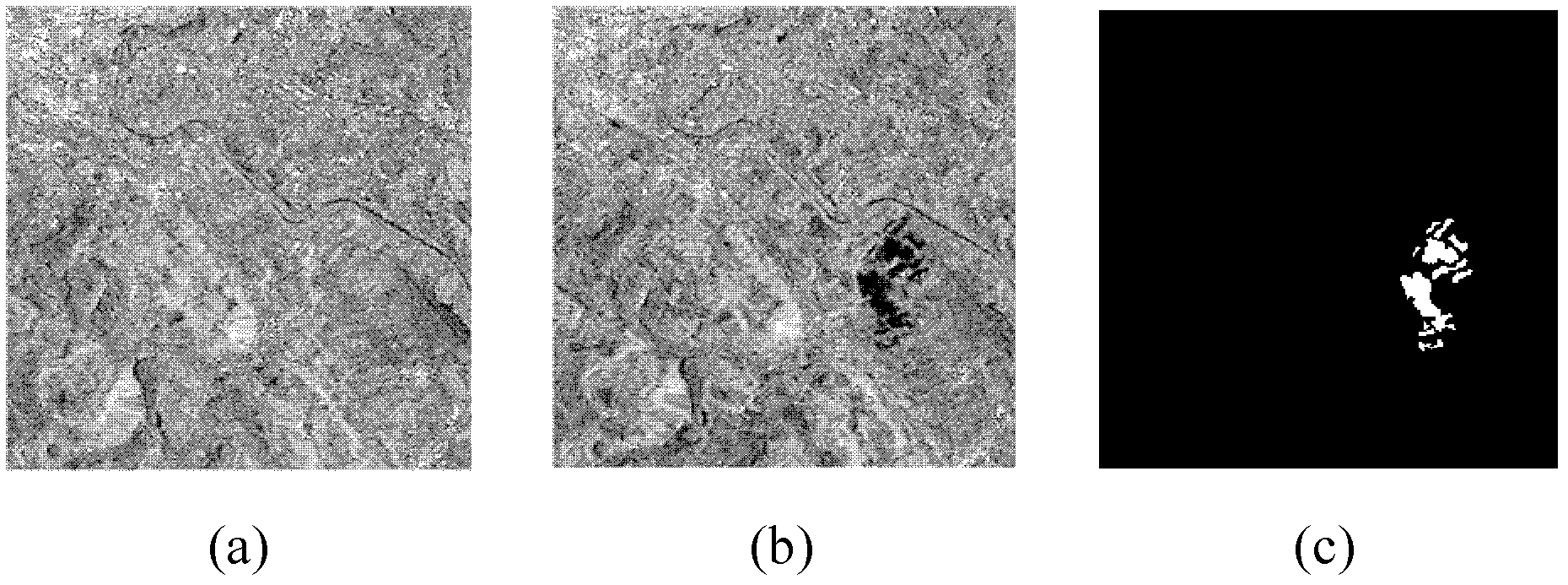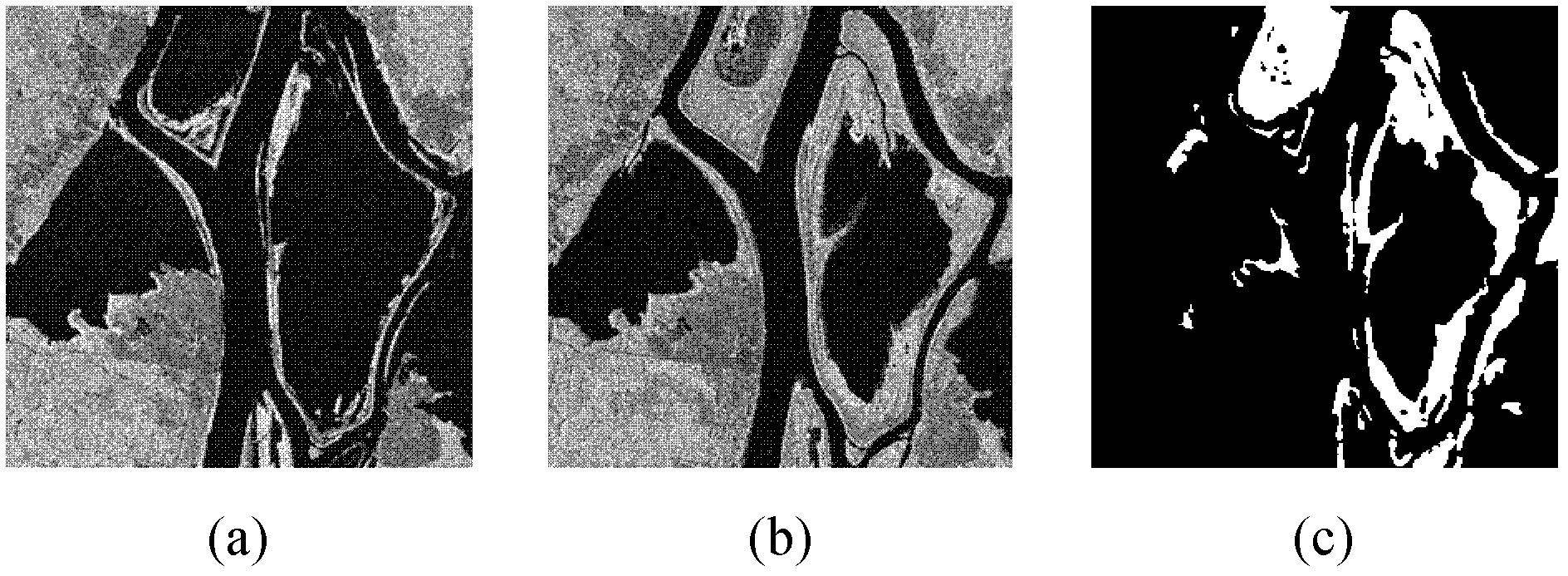Clonal selection-based method for detecting change of remote sensing image with optimal entropy threshold
A technology of remote sensing image and clone selection, applied in image analysis, image data processing, instrument and other directions, can solve the problem of large deviation of threshold value, and achieve the effect of reducing noise and low detection error.
- Summary
- Abstract
- Description
- Claims
- Application Information
AI Technical Summary
Problems solved by technology
Method used
Image
Examples
Embodiment Construction
[0032] refer to figure 1 , the specific implementation steps of the present invention are as follows:
[0033] Step 1. Construct the difference image map DI of the two-temporal remote sensing images.
[0034] use I 1 and I 2 Represent the two-temporal remote sensing images respectively, firstly I 1 and I 2 Compared, then take the logarithm of its ratio to obtain the difference image map DI=log(I 1 / I 2 ).
[0035] Step 2, initialize the population and set parameters.
[0036] Since the grayscale range of the original grayscale image is between 0 and 255, the grayscale value has 2 8 Therefore, the 8-bit binary code is used to initialize the population, and the 8-bit binary code is randomly generated as the individual of the population, and the maximum number of iterations is set to 50, the current number of iterations g is 0, and the initial population size N is 10.
[0037] Step 3, calculate the affinity of the population, and sort the affinity in descending order.
...
PUM
 Login to View More
Login to View More Abstract
Description
Claims
Application Information
 Login to View More
Login to View More - R&D
- Intellectual Property
- Life Sciences
- Materials
- Tech Scout
- Unparalleled Data Quality
- Higher Quality Content
- 60% Fewer Hallucinations
Browse by: Latest US Patents, China's latest patents, Technical Efficacy Thesaurus, Application Domain, Technology Topic, Popular Technical Reports.
© 2025 PatSnap. All rights reserved.Legal|Privacy policy|Modern Slavery Act Transparency Statement|Sitemap|About US| Contact US: help@patsnap.com



